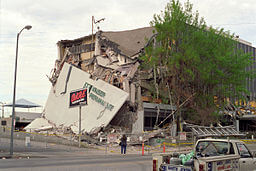CERT Doorhanger

Doorhanger breaks preparation into four stages.
When it comes to being prepared, storing water and food are just the beginning. Unfortunately, many people stop there.
Our neighborhood CERT team wanted to get a better result. We researched and then broke preparation down into four stages to make it easier for people to get started building their emergency survival kit.
Our Doorhanger
Detailed instructions were published on a bright yellow doorhanger, distributed by the local block captain. Each hanger had the name and contact information of the block captain, along with other emergency phone numbers.
The Process
Completing the four stages will take people several weeks. But they will be well prepared when they have accomplished it. Here’s how the doorhanger was laid out.
Stage One: Stay-at-Home Stash. Eleven things you and your family (including pets) need to Shelter in Place for at least a week. Superstorm Sandy showed just how important the Stay-at-Home Stash is.
Stage Two: Medical and Personal Care. These items – seven categories of them — will keep you alive and functioning. For senior citizens, this list includes spare glasses and hearing aid batteries.
Stage Three: Important Papers. Collecting papers and having them in one location, preferably protected from fire AND available to be moved, is the biggest challenge for everyone. Certainly, you can’t pull them together in just a few moments, and that may be all the time you have. (We are working on getting electronic copies of important papers onto flash drives that would be easy to carry.)
Stage Four: Evacuation Kit. A bag or backpack contains items from the earlier stages, plus extra car keys, computers, etc.
Action Step for YOUR neighborhood
What would it take for YOUR neighbors to get prepared? You can download and duplicate excellent “Be Prepared” lists from the Red Cross, from CERT, and probably from your city.
We believe that customizing the message to our neighbors will make it more likely that they will follow through. Printing the list on a brightly colored door-hanger, instead of on a sheet of paper, makes it memorable. And delivering the message door to door is an important way to introduce and involve our CERT team.
P.S. We’ll keep you updated on our progress!
UPDATE: It has been two years since the first Doorhanger was distributed. This year we updated, reprinted and distributed it again. So many people remembered it and still had the original in a drawer or on the refrigerator!

